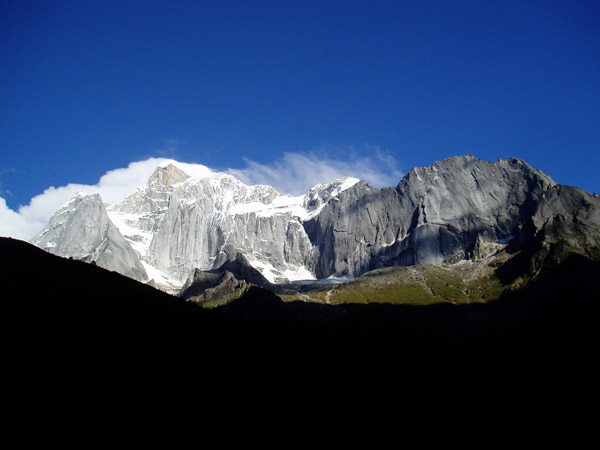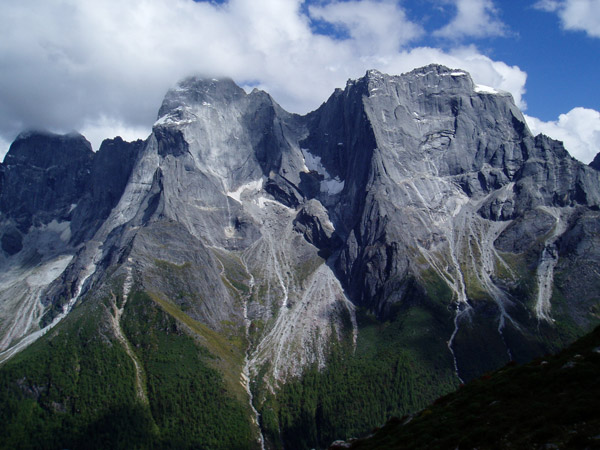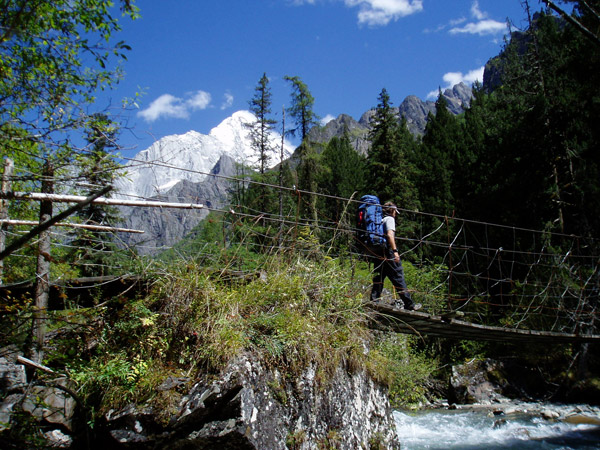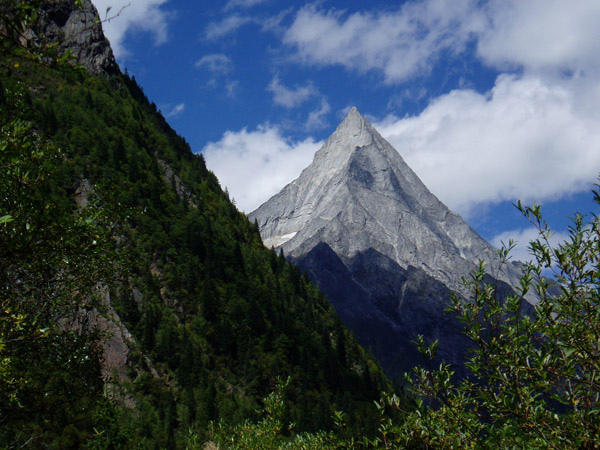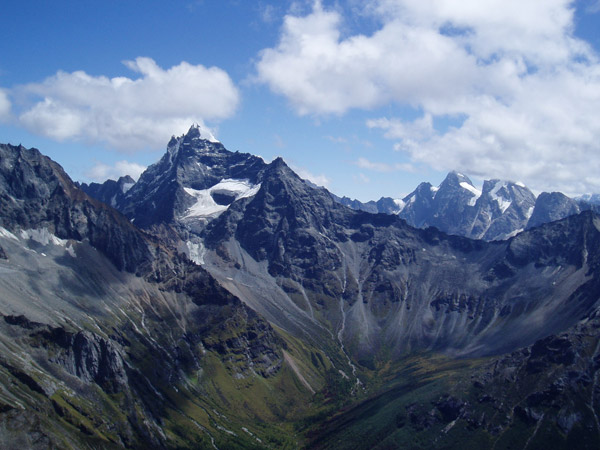China - Siguniang Trek
Overview
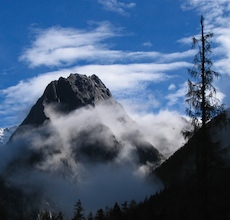
Niuxim Shan (Yak Heart Peak) shrouded in morning clouds.
Andy Bourne
Siguniang, or Four Sisters Mountain, is the centerpiece of a newly designated UNESCO World Heritage Site in China's Sichuan Province where our trek will commence. This 20,320-foot spike of granite and ice rises impossibly 8000 feet above the Changping Valley floor. Our goal on this trek is to do a through hike of this beautiful mountain range via two valleys - ascending the Changping and descending the Bipeng. Starting and finishing in the small Qiang Tibetan town of Rilong, this loop trek passes through some of the most amazing granite scenery in the world, and peers into the cultures straddling China and Tibet.
China - Siguniang Trek
Itinerary
We begin our journey by flying to Chengdu, the capitol of China's Sichuan Province. We have an evening to explore this giant, yet remarkably laid back city with it's mix of modern skyscrapers and bustling business along side ancient tea houses and temples. A particular favorite for many is the famous vegetarian restaurant run by monks within Wenshu Temple.
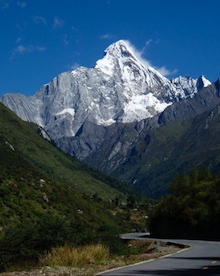
Siguniang as viewed from the town of Rilong. Andy Bourne
We then make the 6 hour drive from the lowlands of Chengdu to the highlands on the flanks of the Tibetan Plateau where the small town of Rilong sits beneath a serrated range of peaks. The most well known among the peaks is Siguniang, the tallest in a line of four peaks known as Four Sisters Mountain. Known for centuries by the local Qiang Tibetans, these peaks are starting to attract trekkers and climbers from around the world for their untouched beauty and remarkable surroundings. Autumn is a particularly beautiful time as the weather becomes drier and the foliage begins to turn colors.
After an evening at a hotel in Rilong, and a token visit to the "Rock and Ice Bar" run by a local Chinese quasi-rastafarian climber, we pack up our horses the next morning and begin the trek into the Changping Gou (Long Terrace Valley). Along the way we pass through forests of Tamarac and Fir trees draped in moss that could pass for the temperate rainforests of the Olympic Penninsula of Washington.
The rivers and streams run aqua blue from the glacial silt. Eventually we emerge from the forest to open meadows that stretch a mile wide, a gentle U-shape connecting the hulking masses of granite on either side. Our first camp is right below the northwest face of Siguniang, an open meadow where herders still graze their yaks. An amazing high altitude eating machine, yaks have evolved to have almost twice the lung capacity and red blood cells than their lowland cowsins to help deal with the lack of oxygen.
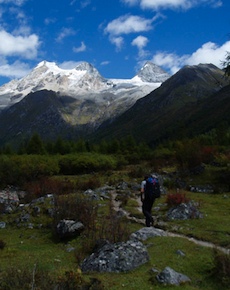
We pass Luo Tuo Feng (Camel Back Peak) nearing the head of the Changping Valley.
Andy Bourne
As we move further up the valley, the trees become more sparce, open meadows give way to breath taking views of the surrounding peaks. Our second camp is below the deftly named Luo Tuo Feng, aka Camel Back Peak, with stunning views of Siguniang.
The next day we pack up, leave our horses, and ready ourselves for the most strenuous section of the trek as we hike up and out of the Changping Valley via Yakou Pass, the 15,200 foot pass accessing the Bipeng valley on the other side. This is certainly the most difficult day of the trek involving some snow travel and steep alpine terrain. After descending into the Bipeng valley, we make camp at Dapingtai (Big Platform) at about 13,800 feet elevation.
The two days we descend the Bipeng Valley passing several crystal clear lakes and streams and the spectacular mountain scenery of serrated peaks and glaciers. The Bipeng Valley is remote and seldom visited compared to other valleys in the park, and we will likely be alone during this section of the trek. Finishing our hike at the mouth of the valley, we meet our driver and make the short drive back to Rilong for a traditional round table meal, Sichuan-style.
The last day of the program is spent driving back to Chengdu, but a trip to Sichuan would not be complete without visiting the Wolong Panda Reserve - one of the oldest and largest panda research centers in China.
Join us on this unique exploration of Southwest China, and this newly designated UNESCO World Heritage Site.
China - Siguniang Trek
Cost and Details
$3890
Prices are based on a minimum of 4 people per trip. Contact the AAI Office at 360-671-1505 (Toll Free: 1-800-424-2249) or email: [email protected] for pricing on smaller groups.
Dates
Flight Information
Flights should be arranged to arrive in Chengdu on the first scheduled day of the program, and depart Chengdu the day after the last scheduled day.
Program Cost Inclusions and Exclusions
Inclusions:
Lodging (hotels and tents on a shared basis) during the dates of the program; all meals; group cooking equipment; admissions to museums and national parks; group cooking equipment, and pack horses.
Exclusions:
Airfare; personal equipment; government and airport taxes; Chinese travel visa; inoculations; personal insurance; excess baggage; gratuities to guides.
